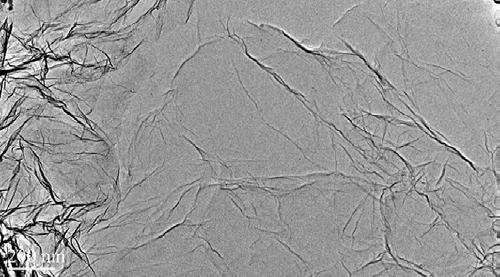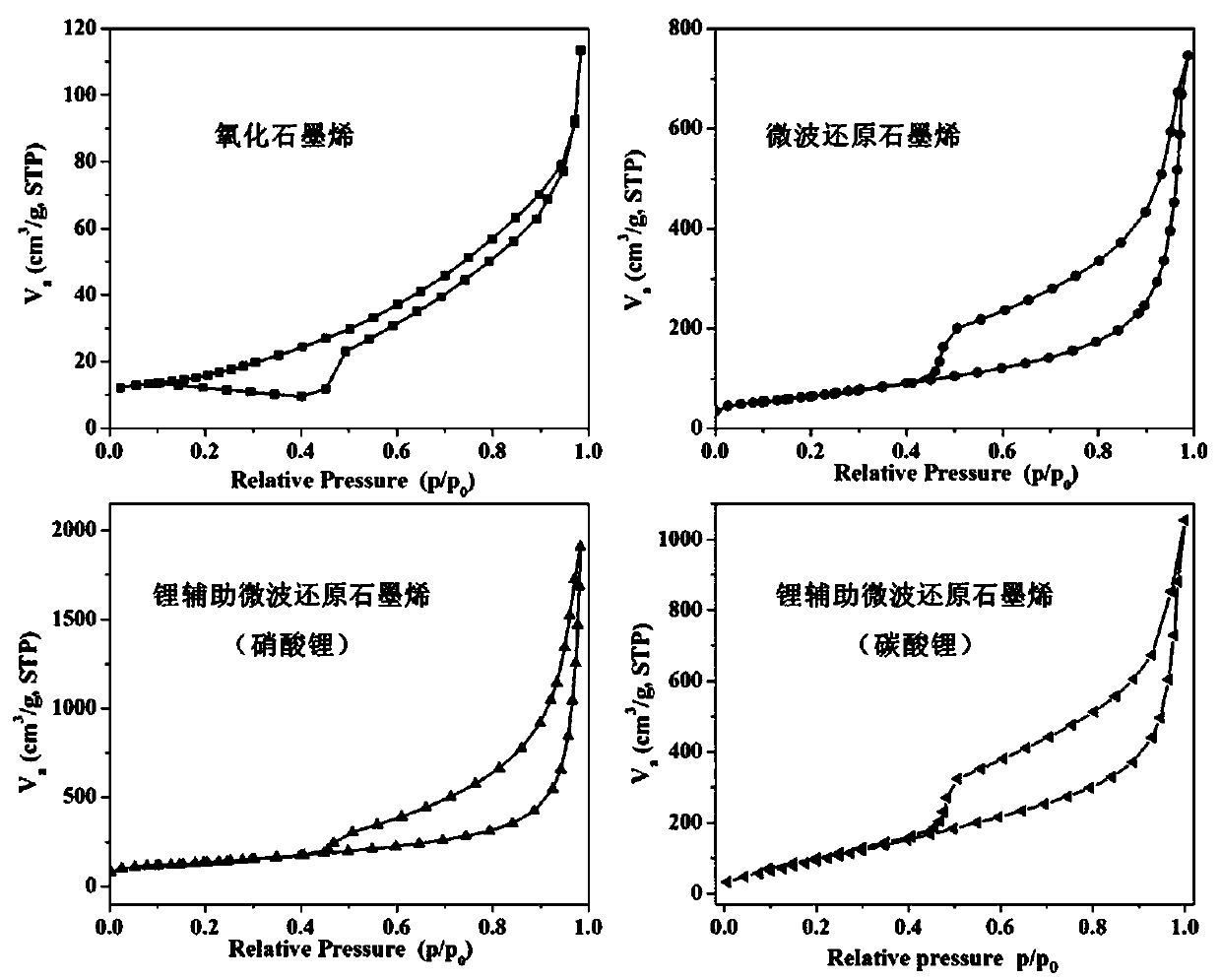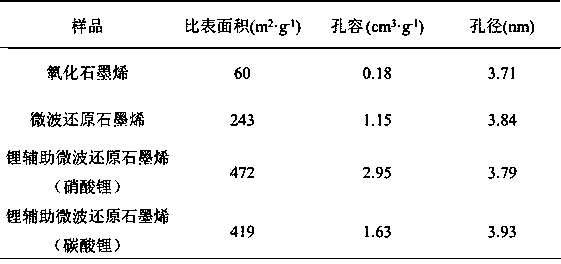Method for reducing exfoliated graphene oxide by lithium-assisted microwave thermal expansion method
A graphene, thermal expansion technology, applied in chemical instruments and methods, inorganic chemistry, carbon compounds, etc., can solve problems such as difficulty in obtaining single-layer or few-layer graphene, harsh preparation conditions, and thick sheet thickness, and achieve large-scale And the effect of rapid preparation, high product purity and low cost
- Summary
- Abstract
- Description
- Claims
- Application Information
AI Technical Summary
Problems solved by technology
Method used
Image
Examples
Embodiment Construction
[0014] In order to make the purpose, technical solution and advantages of the present invention clearer, the technical solution of the present invention will be described in detail below. Apparently, the described embodiments are only some of the embodiments of the present invention, but not all of them. Based on the embodiments of the present invention, all other implementations obtained by persons of ordinary skill in the art without making creative efforts fall within the protection scope of the present invention.
[0015] The technical solution of the present invention will be described in detail below in conjunction with the accompanying drawings.
[0016] The chemical substance material used during specific implementation is: graphite, potassium permanganate, sodium nitrate, lithium nitrate, lithium carbonate, hydrochloric acid, concentrated sulfuric acid, hydrogen peroxide, deionized water, and its preparation consumption is in grams, milliliters, centimeters 3 is the ...
PUM
 Login to View More
Login to View More Abstract
Description
Claims
Application Information
 Login to View More
Login to View More - R&D
- Intellectual Property
- Life Sciences
- Materials
- Tech Scout
- Unparalleled Data Quality
- Higher Quality Content
- 60% Fewer Hallucinations
Browse by: Latest US Patents, China's latest patents, Technical Efficacy Thesaurus, Application Domain, Technology Topic, Popular Technical Reports.
© 2025 PatSnap. All rights reserved.Legal|Privacy policy|Modern Slavery Act Transparency Statement|Sitemap|About US| Contact US: help@patsnap.com



